How ‘Mank’ Cinematographer Erik Messerschmidt Illuminated a Monochrome Palette
We pull back the curtain on David Fincher's nod to Citizen Kane.
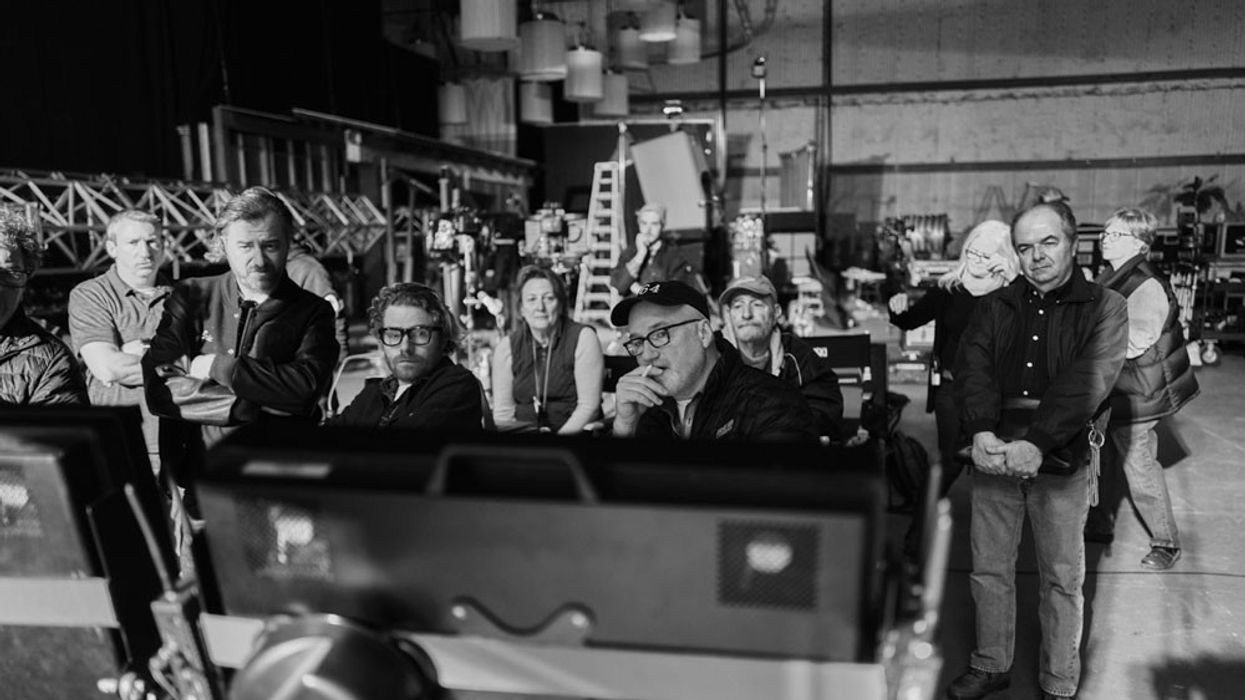
Heading into Oscar weekend, Mank cinematographer Erik Messerschmidt, a first-time nominee and ASC winner, is already deep into his next project. The Emerson College grad earned his chops as a best boy and gaffer before moving into cinematography full-time.
He spoke with No Film School via phone about working on one of this year's biggest films.
It was the series Mindhunter where Messerschmidt teamed with director David Fincher, pushing the boundaries of digital workflows. With Mank, audiences are taken back in time to the 1930s as the story follows how Citizen Kane screenwriter Herman J. Mankiewicz (Gary Oldman) finishes the screenplay for Orsen Welles in a gripping biographical drama.
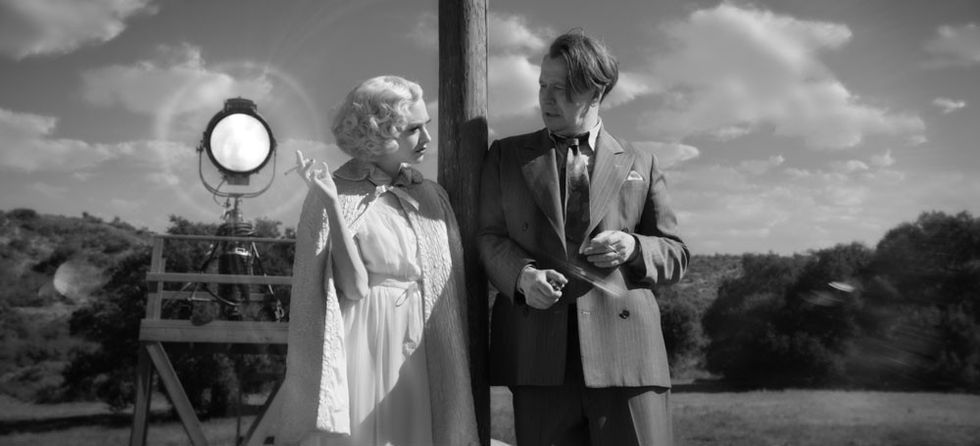
Messerschmidt says the improvement in light sensitivity wasn’t the only reason why the monochrome camera was chosen, but it was “a value added benefit” when testing it against color cameras.
“The reason why we did is that we felt there was so much more tonal fidelity and tonal range in the camera than if we shot color," he says. "From a purely aesthetic point of view, the image looked like it had this velvety softness to it. It almost looked three-dimensional in the way the color camera didn’t by comparison. We were really looking for a platinum print—a black and white look, which is difficult to achieve even in film.”
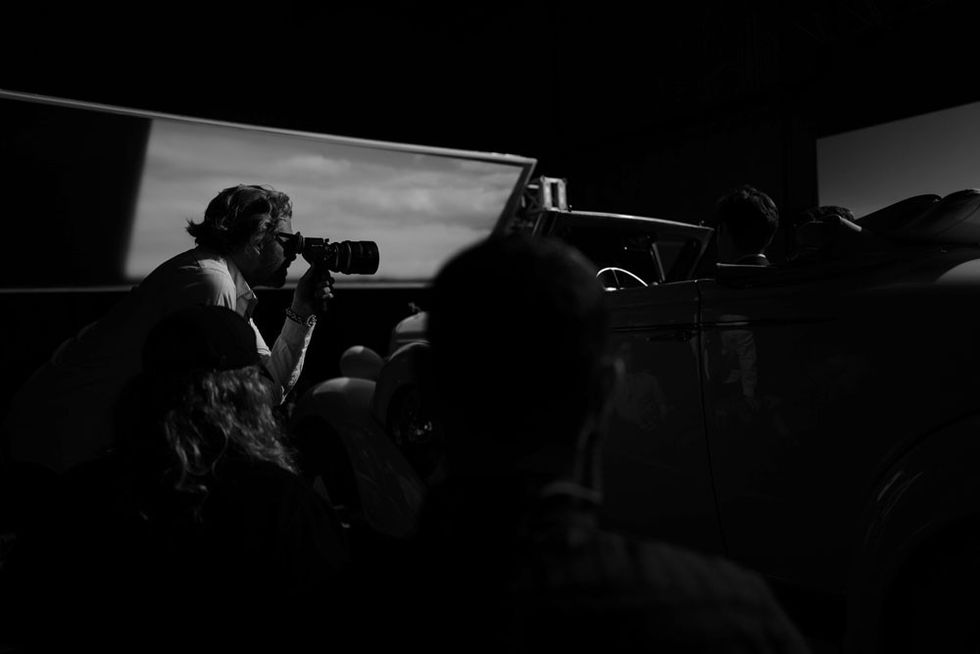
“One of the things that happens with all lenses when they are close down to deep f-stops is you get a thing called diffraction, and the image tends to soften and you lose resolution,” Messerschmidt says. “I tested dozens of lenses at Keslow Camera, where we were able to evaluate the resolving power of the lenses. We found that the Leica lenses were exceptionally sharp at deep f-stops.”
When it came to lighting scenes, Messerschmidt admits “there was a learning curve” and “a bit of an adaption to our overall process.”
Instead of rating the camera at 800 ASA, as you normally would on a camera with a color filter, the DP shot 3200 ASA as it changed the contrast, adding more noise in the shadows and more highlight retention. And with shooting at a deep f-stop, generally around T-11, he used more lighting on the movie than he normally would.
“The initial idea was to take the contemporary sequences and light those with a bit more modern technique—top light, soft light, through windows—and then treat the flashback sequences that take place at the studios and the early night scenes more as classic cinematography,” he says.
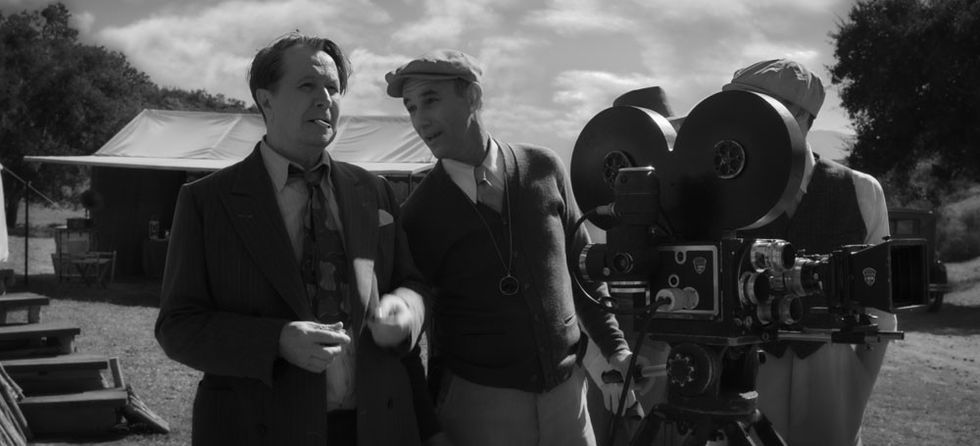
“Even though it was a black and white camera, we felt all blue lights in the daylight exteriors could, at times, look rather harsh and didn’t always give us the best skin tones. I used an orange filter on the camera called the Harrison Orange #2 during daytime work. The filter helps cleans up the skin tones and gives you a little more separation between the faces and the background,” says Messerschmidt.
To frame scenes, focus was one of the primary concerns.
“I’m quite interested in the idea of how we get the audience to look where we want them to look in the frame and focus is an easy way to do that,” he says. With Mank, the cinematographer used focus, perspective, and blocking to propel the story. “There are bespoke moments in the film where we do shoot wide open or substantially wider f-stops to collapse the depth of field. We even dynamically change the depth of field in a few instances. David and I both think black and white looks better at deeper f-stops, and you can take advantage of the texture and shape and depth of the format where color just doesn’t.”
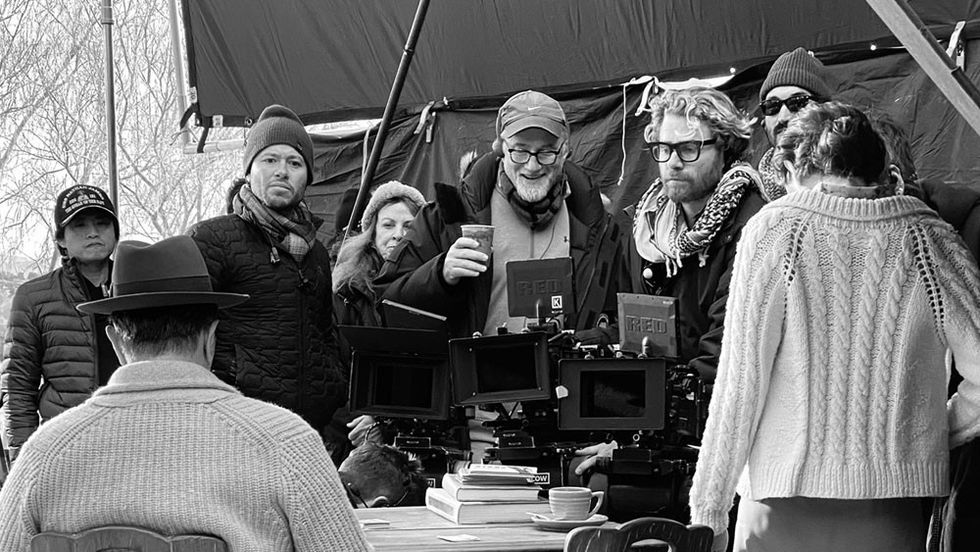
“It was quite exhaustive and deliberate," he says. “With David, it’s a combined effort of people very much committed to how the movie looks, and what the audience’s visual experience will be.”











